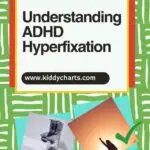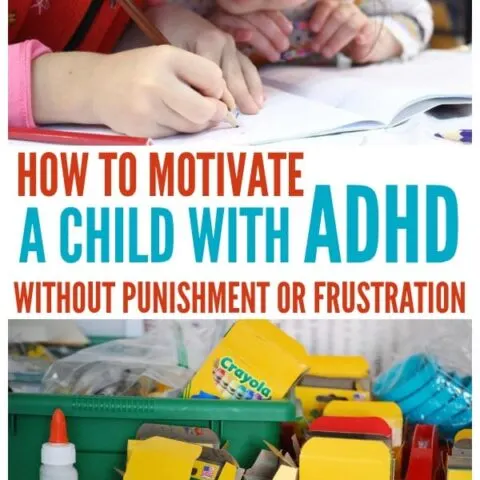We thought it would be a good idea to shed some light on the fascinating world of hyperfixation, which is a trait seen in both child and adult ADHD. The site has a few articles already on ADHD alongside some other ADHD behaviors, including its impact on daily life. We thought we would explore this particular trait in a little more detail. We hope that doing so will be of help to neurodivergent people, not just those with ADHD, as it can occur within autistic people as well.

Whether you’re an adult with ADHD or a parent navigating the challenges of raising a child with ADHD, understanding this symptom is crucial. ADHD was previously classified as one of the mental health conditions within the DSM, such as obsessive-compulsive disorder (OCD), or depression. However, it is now accepted as a neurodevelopment condition. So, let’s dive in and explore what hyperfixation is, why it can be both helpful and difficult, and how we can effectively manage it.
What is Hyperfixation?

Hyperfixation, in the context of Attention Deficit Hyperactivity Disorder, is an intense and sometimes overwhelming concentration on a specific task or activity, often to the exclusion of all else. The intensity of hyperfixations varies, some lasting a few hours, depending on the intensity of your specific symptoms of ADHD.
It is possible that sometimes those with an ADHD brain can be absorbed for days. It’s like having tunnel vision for one specific thing – where time limits mean nothing – whether that’s a book, a TV series, a video game, or a scientific concept. This can last for hours, days, or even weeks at a time. It’s not just a casual liking or a hobby, but rather, it’s a deep dive into a specific topic or activity that feels almost uncontrollable.
The thing about hyperfixation is that it isn’t necessarily a negative symptom. In fact, it can sometimes be beneficial. People with ADHD who experience hyperfixation can achieve phenomenal levels of detail and expertise in their chosen areas. Though those with ADHD have issues around executive functions, particularly focus. It isn’t that there is a deficit with that focus, despite the name, it is more than they struggle to regulate that focus.

They can become leading experts, top performers, and innovators in their field. Yet, the challenge arises when there’s a need to switch tasks, especially to something less engaging. This transition can be tough, sparking frustration and resistance. But, with understanding and strategies, we can learn to harness the power of hyperfixation while also mitigating its potential drawbacks.
Examples of Hyperfixations
Hyperfixations can cover a wide range of interests or stimuli, both positive and negative, effecting people in different ways. Positively, individuals may hyperfixate on topics like art, science, literature, or even a new hobby. These fixations can result in impressive skills and knowledge. On the other hand, negative hyperfixations, such as obsessively focusing on a bothersome sound like a dripping tap, can lead to frustration and sleep disturbance.
The realm of successful people with ADHD is rife with examples of individuals who have harnessed the power of hyperfixation in their careers.
Albert Einstein
Though never diagnosed during his lifetime, is widely believed to have shown signs of ADHD. His intense focus on the mysteries of physics led to the Theory of Relativity and other ground-breaking discoveries.

Michael Phelps
The most successful Olympian of all time, has openly spoken about his ADHD. He channeled his hyperfixation into swimming, dedicating countless hours to perfecting his technique and endurance, which resulted in a record 23 Olympic gold medals.
Richard Branson
The maverick entrepreneur and founder of the Virgin Group, was diagnosed with ADHD in his childhood. His hyperfixation on entrepreneurial ventures led him to start numerous successful businesses spanning music, travel, and telecommunications, transforming him into a business magnate.

Simone Biles
An Olympic gold-medalist gymnast, also has ADHD. She used her ability to hyperfocus to her advantage, committing to rigorous training routines to refine her skills. Her dedication and single-minded focus on her sport have made her one of the most decorated gymnasts in the world.
These examples highlight the potential of hyperfixation when channeled. It can drive unparalleled success in various fields, turning perceived challenges into significant advantages. It is important to recognise the difference between ADHD hyperfixations, and obsessive compulsive disorder too.
The ups and downs of ADHD hyperfixation
Let’s take a rollercoaster ride through the ups and downs of hyperfixation on a particular task, focusing on its potential benefits and where it can also become a real problem.
The upside of hyperfixation
When hyperfixation takes hold, it’s like strapping a rocket to your curiosity and blasting off into a universe of intense focus and creativity. It means you’re equipped with an uncanny ability to absorb intricate details, analyze complex concepts, and generate innovative ideas in your chosen area. Hyperfixation can fuel success in academic, professional, and creative pursuits—areas where deep concentration and expertise are highly prized. We will explore how to manage this superpower in the next section.

The downside of hyperfixation
However, every coin within this particular executive functioning trait has two sides. Hyperfixation can also lead to some challenging situations, and also has detrimental effects too, including potential social isolation if we become so focused that we don’t stay connected to others. It can make transitions tough, causing distress when you need to shift attention from a favored activity to a necessary task. It might lead to issues with time management, time blindness, relationships, and balance. In the following section, we’ll discuss strategies to navigate these challenges, turning potential stumbling blocks into stepping stones.

Managing hyperfixation: Strategies and techniques
Unraveling the tangles of hyperfixation isn’t a walk in the park, but don’t fret! In this section, we’ll provide you with some tried and tested strategies to manage hyperfixation effectively. You can then find the best way for you. It can be a lot easier to keep anxiety disorders at bay when you have put in place coping mechanism to help with some of the ADHD traits that you know you need support with. We’ll delve into techniques that help you balance your intense focus with other life responsibilities, fostering a harmonious relationship with this unique trait.
There you have it, folks! Whether you’re ready to harness the power of hyperfixation or looking for ways to mitigate its challenges, this guide will illuminate your path. So, let’s jump right in and discover more about this fascinating feature of Attention-Deficit Hyperactivity Disorder!
Our ideas for managing hyperfixations

When it comes to managing hyperfixations, especially those that are disruptive or negative, it’s important to employ effective strategies. For sound hyperfixations, creating a calming environment with white noise or using earplugs can help minimize the impact. Negative fixations can be redirected by engaging in activities that kick in a helpful hyperfixation, such as channeling energy into a productive project or engaging in physical exercise.
1. Time management techniques
The implementation of time management techniques can be advantageous in managing hyperfixations. Techniques such as the Pomodoro method, where work is divided into intervals typically 25 minutes long, separated by short breaks, can help to balance the focus between hyperfixations and other essential tasks.
2. Mindfulness and meditation
Mindfulness and meditation can also be beneficial in controlling hyperfixations, both those that are activity based, but also very importantly hyperfixations that occur with our thoughts that can then develop into anxieties if left unchecked.
Regular practices can train the mind to focus on the present moment, which in turn can help divert attention away from hyperfixations towards a more balanced distribution of focus, reducing any of their negative impact.

3. Regular exercise
Engaging in regular physical exercise has been proven to help manage ADHD symptoms, including hyperfixations. It is critical within ADHD to keep an eye on physical health, as well as mental state. Exercise can reduce impulsivity, improve concentration, and promote better overall mental health.
4. Therapy and counseling
Cognitive-behavioral therapy (CBT) and counseling can provide extra support in managing hyperfixations, so don’t be afraid to seek professional help if you feel that you need it. These therapeutic approaches teach individuals how to redirect their hyperfixation tendencies into more productive or balanced behaviors.
5. Scheduled breaks
Incorporating scheduled breaks during work or study sessions can prevent becoming overly absorbed in a single task, and finding that you have spent too much time focused on one thing. This strategy can ensure a more balanced distribution of attention and prevent the intense over-focus often seen with hyperfixation.

Remember, it’s always important to consult a healthcare professional or counselor for personalized advice and strategies.
Embracing that positive side
While hyperfixation often poses challenges, it’s essential to remember that this intense focus can also have positive aspects. When channeled productively, it can lead to deep and comprehensive learning in specific areas of interest. For example, an individual with a hyperfixation on a particular period in history may become a leading expert in that field, utilizing their intense interest to fuel long hours of detailed research and study. Conversely, a person with a hyperfixation on a musical instrument may achieve high levels of proficiency and even become a virtuoso performer due to their dedicated focus and practice enabled by their hyperfixation.
Another positive side of hyperfixation is the potential for enhanced creativity. People with hyperfixation often have the ability to see things from unique perspectives, offering innovative solutions and ideas. For instance, a person hyperfocused on environmental issues might come up with inventive strategies and initiatives to combat climate change.

Finally, hyperfixation can also lead to personal satisfaction and fulfillment. An individual might be able to immerse themselves in an activity or topic they’re passionate about. This could look be a hyperfixation on painting; spending joyful hours creating intricate artwork. This will likely result in a sense of accomplishment and a body of work they can be proud of.
Management techniques to balance hyperfixation are important. It is also possible to embrace the positive aspects of this intense focus. It can lead to productive outcomes, personal growth, and fulfilment.
The key to hold on to when managing hyperfixation is that the ADHD brain is YOUR brain, and we are still in control of our thoughts and feelings.
It is so very important to remember that with all aspects of ADHD, and mental health.
We do have the power to change our way of thinking and being – it is about reframing, and taking back control using some of these methods and techniques, so that the negatives of hyperfixation are no-longer able to take over.

Conclusion
In conclusion, hyperfixation, when managed properly, can serve as a powerful tool for personal and professional growth. It’s like having a supercharged engine in the car of your mind, driving you forward with intense focus and enthusiasm. Yes, it needs careful handling. Yes, it needs regular pit-stops to maintain balance, but oh boy, can it take you places! As we navigate this journey called life, it’s our passions that often fuel our progress. So, embrace your hyper fixations, balance them with a holistic approach to life, and buckle up for an exciting ride! If you feel you are struggling, don’t be afraid to get an expert opinion. Sometimes you might need support to help.
We do hope you like this article on – don’t forget to check out these too:
ADHD on KiddyCharts Part 3
Here are a selection of articles from KiddyCharts on ADHD - do check out all of them on our resources pafge though.
ADHD and lying: Why do kids do it, and what can you do about it all?
Sometimes ADHD kids can lie - find out why this happens, and what you can do about it here.
What to do when ADHD and stealing collide
ADHD and stealing can potentially coexist - we look into what causes this and strategies for helping.
ADHD sleep issues: 10 tips to help your ADHD kids sleep
If your child had ADHD, they may also struggle to sleep. Check out some of the suggestion on how you can help, as well as how they can help themselves.
As well as some on other sites:
Other articles on ADHD from the web (Part 2)
Here are some more articles on ADHD from the internet - do check them out alongside the other resources that we have on our site too.
5 Simple Ways to Motivate a Child with ADHD
Some ways to help motivate those with ADHD - something that can be really difficult to do!
What's it like for a child with ADHD?
An over-arching article about what it is like as a child with ADHD.
10 Things Other Parents Need to Know About ADHD in Girls
ADHD in girls is something that we are only just discovering - with girls being diagnosed later in life on average that boys. Check this article out for more info now.
We’d love to have you join our newsletter if you can:
Thanks for coming to see us.
Helen








